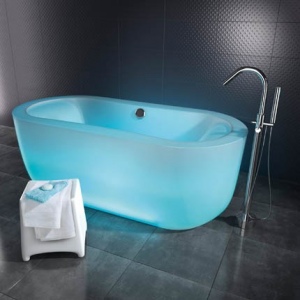 Self-storage units seem to be popping up on every block—maybe a sure sign that we all have too much stuff! (In addition, there are numerous web sites specifically geared toward setting up and running a self-storage facility; business seems to be booming.)
Self-storage units seem to be popping up on every block—maybe a sure sign that we all have too much stuff! (In addition, there are numerous web sites specifically geared toward setting up and running a self-storage facility; business seems to be booming.)
First, let’s talk about whether storage is a good idea at all. Many consumers feel that any storage of possessions is a total waste of money—why not just get rid of extra stuff? Are you a hoarder? But most of those choosing to store are not just packing away the things that don’t fit in their residence. The reasons vary. Many families are between residences; maybe one is sold before the next is ready. They might be storing family heirlooms that are too delicate for their children. Some people need to store seasonal, but important, equipment till the next year—skis, fishing gear, golf clubs, even boats. They might be in the midst of life phase that has totally changed living circumstances, such as military or family obligations, a move back with parents while job hunting, a one-year trip around the world!
Do remember that if you don’t pay your rent, your possessions will be auctioned off. (There is now a U.S.-based TV show named Storage Wars, where bidders vie for the contents of units.) If you really need storage, and you can afford it, then there is no reason to be ashamed of having too many possessions.
Choosing a Unit
So, now that you have decided self-storage is what you need, you must decide on how much space and what ambient conditions are required, and how you will pack your items before you store them. If your possessions are of regular size, or already packed, it may be simple to calculate cubic feet needed. Many storage companies offer tips and calculators to help with this task. Don’t forget that you will need extra space for aisles to allow for moving contents and easy access for removal. It is likely that the one thing you really need was put in the back corner because it seemed superfluous at the time.
Choosing a self-storage facility near your residence should have the highest priority.
Consider all of the options available and their price. You might need climate control—leather furniture, pianos, and electronic equipment, for example, need dust, temperature, and moisture control. (Read computer owner’s manuals for guidelines on temperature control.) The idea of your possessions housing insects is really horrifying, so seal everything as tight as you can!
Check the options at various facilities for such things as: access control, 24-hour surveillance, any extra fees (such as for unlimited access), and insurance. And, check with your home insurance provider about coverage for items in storage.
Packing the Boxes and the Storage Unit
Select sturdy, even reinforced, cardboard moving boxes to use for storing your household items. Use one or two standard sizes, if at all possible; this one thing can make your storage job a lot easier, because they will all fit neatly together. If you have really valuable possessions, pack them carefully as you would just to move them. Make sure to use good tape, and to seal the boxes securely. This will keep out dirt and most insects, and will preclude the tape pulling away from the cardboard. Humidity can be a problem with any tape or box, so pack the contents in bubble or stretch rap if you live in a humid climate. Use the space in drawers, armoires, even in refrigerators, for extra storage. Clean and dry all appliances before moving them to the space. Label everything completely!
When packing the storage unit, first put skids, a tarp, or cardboard layer on the floor. To protect any furniture cover it with pads or plastic sheets. Keep everything upright, and place heavier items in the back and on the floor. Don’t forget to use the space beneath tables and desks for smaller boxes, or such items as lamps. Wrap bubble wrap around the legs of all furniture and equipment. Store any mattresses flat—it is tempting to stand them on an edge, but that will mean a sagging mattress later.
All equipment should be cleaned: empty gas tanks, drain oil, disconnect batteries. Use large trash cans to protect tools. Wipe all metal items with an oily rag to protect them from rust. Do not store anything flammable, or even matches or ammunition.
Attached Images:
- License: Royalty Free or iStock source: shutterstock.com
Connie Williams is an information junkie who lives to ferret out fascinating ideas for her readers. She writes articles and blog posts on a variety of topics such as packing boxes. After many moves, she has learned a great deal about using cardboard moving boxes to get the job done efficiently.





